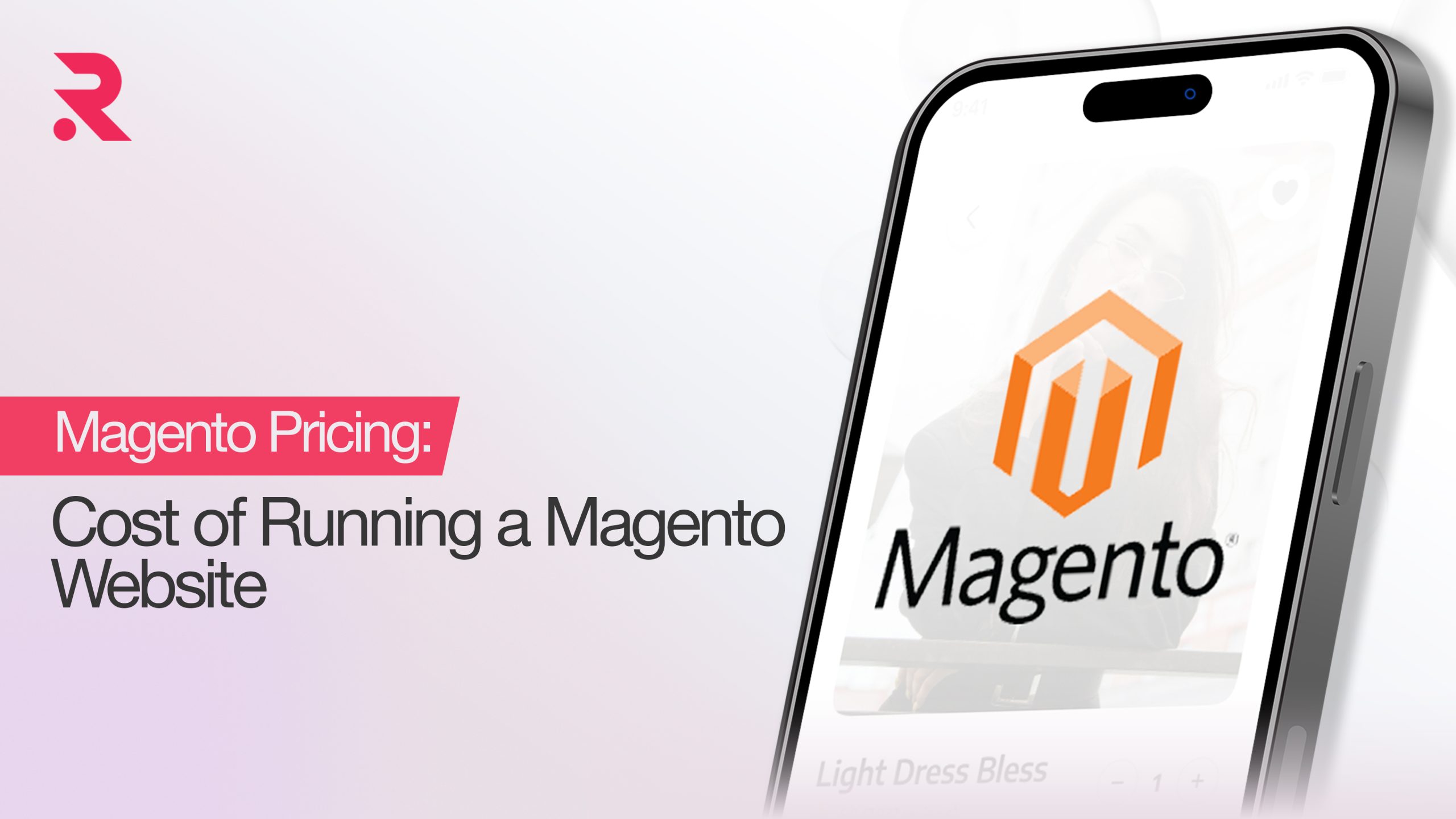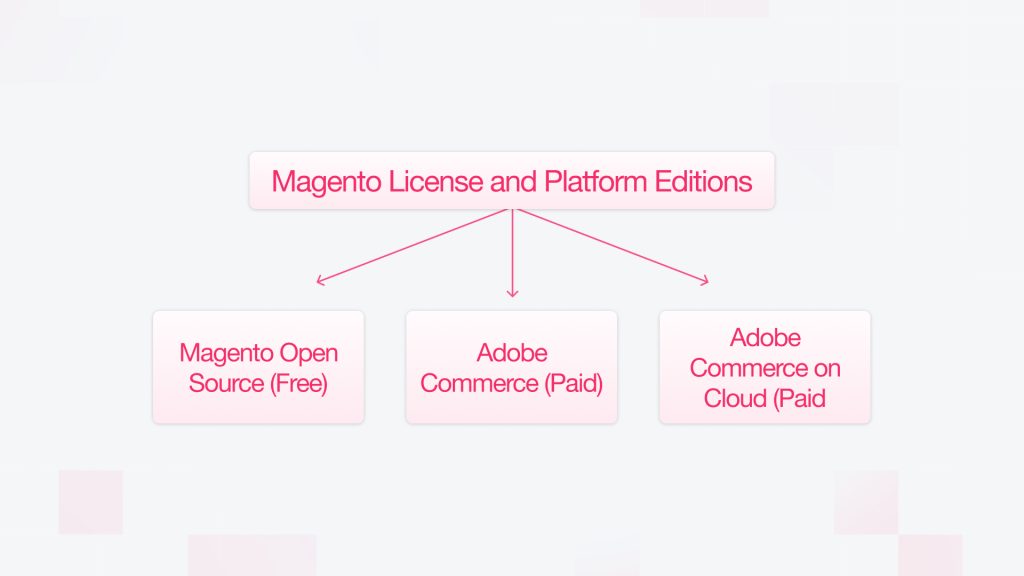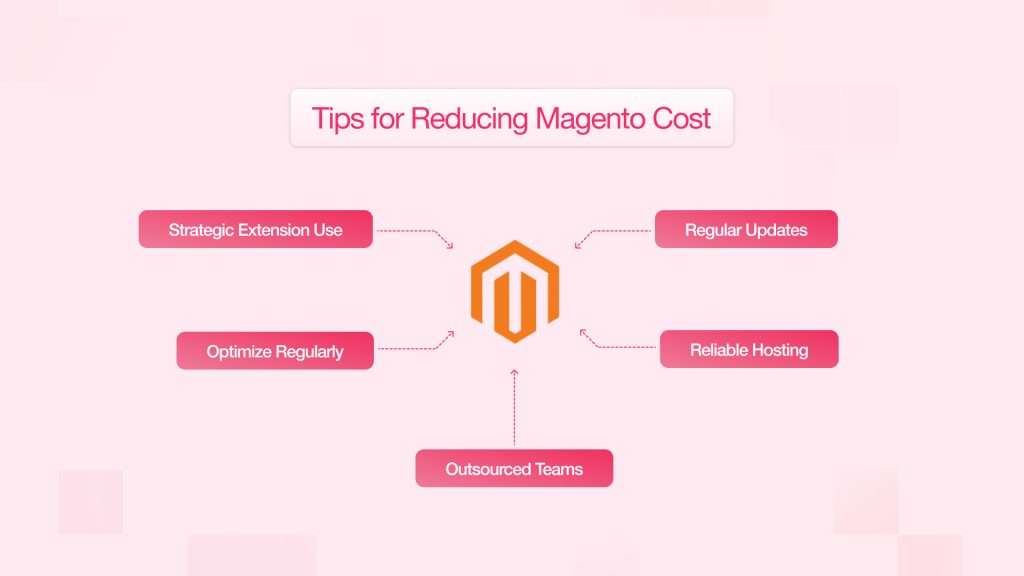Magento Pricing: The True Cost of Running a Magento Website in 2025
Thinking about launching a Magento website? Before you dive in, it’s a good idea to get a handle on what it’s really gonna cost you. This article breaks down all the key Magento Pricing—nothing fancy, just the real numbers—so you’re not caught off guard later on. Whether you’re budgeting for next year or just exploring your options, this will help you plan smarter for 2025. Better to know what you’re getting into before making any big moves, right?
- July 10, 2025
- by Tarun


If you’re thinking about taking your business online—or you’re already there and looking to grow—choosing the right ecommerce platform is a pretty big deal. Magento often pops up as a go-to option, and for good reason. It’s powerful, flexible, and works well for all kinds of businesses. But here’s the thing: the cost of running a Magento site isn’t just about what you pay upfront. There’s a lot more to it. That’s why we put together this guide to help you get a real sense of what Magento pricing looks like in 2025. We’ve laid out everything—from the basics to the ongoing stuff—so you know exactly what you’re getting into. No hidden fees—just a clear, honest look at what it takes to run a Magento site, financially speaking.
A lot of soon-to-be store owners are drawn to Magento—and honestly, it makes sense. It’s packed with features and super customizable, which is a big plus if you want something tailored to your brand. But here’s where some folks get tripped up: Magento’s open-source version is technically “free,” and that can give the impression that setting up shop won’t cost much. In reality, though, the full price tag involves a bunch of moving parts—hosting, development, maintenance, and more. In this article, we’ll break all that down, so you’re not caught off guard. Think of it as a practical guide to what Magento pricing really looks like this year—no sugarcoating, just the stuff you need to know.
Core Components of Magento Pricing
When it comes to the cost of a Magento website, it’s not just one big price tag—it’s really a mix of a bunch of different pieces. You’ve got things like platform licensing, hosting, domain name registration, security (yep, those SSL certificates), design and development, plus any extensions or add-ons you might need. Don’t forget payment processing fees and the regular upkeep—like maintenance and marketing—that keep your site running smoothly. Each part comes with its own cost, and together they all add up to your total investment.
Magento License and Platform Editions
Magento offers different editions, significantly influencing the base “Magento Pricing.”

- Magento Open Source: This version—previously called Magento Community Edition—is totally free to download. Sounds great, right? But keep in mind, “free” just means there’s no license fee. You’ll still need to budget for everything else, like development work, hosting, and any extensions you decide to use. It’s a solid choice for small to mid-sized businesses, especially if you or someone on your team has the technical know-how to handle things on your own.
- Adobe Commerce (formerly Magento Commerce): This one’s the paid, enterprise-level option—built for bigger operations that need advanced features, dedicated support, and the ability to scale without breaking a sweat. If you’re going the on-premise route, expect the annual Adobe Commerce license to start around $22,000.
- Adobe Commerce on Cloud: Having Adobe-managed hosting and infrastructure baked in makes it more of an all-in-one solution-one that would appeal especially to bigger businesses who prefer fewer headaches of the technical kind. Adobe Commerce on Cloud prices usually begin at around $40,000 a year. However, the real price varies widely due to Gross Merchandise Volume (GMV), features you may want to consider in your plan, and a few more factors.
The choice between these editions is a primary determinant of the overall “Magento Pricing” and depends on the business’s scale, traffic volume, and feature requirements.
Hosting Expenses
Once you’ve picked your Magento edition, the next thing to figure out is hosting. If you’re using Adobe Commerce Cloud, you’re good—hosting’s already part of the package. But for Open-Source users, it’s something you’ll need to handle separately. And heads up: Hosting costs can range a lot depending on what kind you go with and how much traffic or power your site needs.
- Shared Hosting: It’s definitely the cheapest route—usually just $1 to $15 a month—but not ideal for Magento. Magento needs a lot of server resources, and shared hosting just can’t keep up. You’ll likely run into slow performance and possible security issues, so it’s best to skip this option.
- VPS Hosting: This one’s a solid middle ground and a favorite for small to mid-sized businesses. With VPS (Virtual Private Server) hosting, you get dedicated resources, which means better speed and more stability. Prices typically fall between $10 and $210 a month—or roughly $700 to $2,000 a year.
- Dedicated Hosting: Need the whole server for yourself? This is the way to go. Dedicated hosting gives you full control and top-tier performance, which is great if you’re running a large store with heavy traffic or lots of custom functionality. Expect to pay anywhere from $80 to $500 per month.
- Cloud Hosting: It is all about flexibility. It uses multiple virtual servers to keep things running smoothly, even during traffic spikes. It’s super scalable and reliable, with monthly costs ranging from $10 up to around $315, depending on your needs.
For most folks using Magento Open Source, having strong, reliable hosting is a must. It plays a big role in how your site performs—and it definitely factors into your overall Magento costs.
Domain Name and SSL Certificates
These are some of the basic building blocks every website needs to get off the ground.
Domain Name: First up, you’ll need a domain—your site’s address on the web. Usually, it’ll cost you about $10 to $20 per year. Some hosting companies toss in the first year for free, which is a nice bonus. But if you’re eyeing a premium or expired domain, prices can jump pretty quickly—anywhere from $20 to $500 a year, depending on the name.
SSL Certificate: This one’s all about trust and security. An SSL certificate protects the data flowing between your site and your customers—super important if you’re accepting payments. The good news? A lot of hosting plans (like Adobe Commerce Cloud) include a basic SSL certificate for free. If not, you might be looking anywhere from $8 to $3,400 per year, depending on how much validation you need. Either way, this isn’t something you can skip—it’s a must-have in your Magento pricing plan if you’re running a secure online store.
Website Design and Theme
Let’s talk about design—because how your Magento store looks and feels plays a huge role in how people connect with your brand.
- Ready-made Themes: Magento does offer some free themes, which are fine for getting started. But if you’re after a more polished, professional look, you’ll probably want to invest in a premium theme. These typically cost anywhere from $25 to $500, and they usually come with better design, features, and support.
- Customized Ready-made Themes: Maybe you find a theme that’s close, but not quite “you.” In that case, you can have it customized to match your brand and add any functionality you need. Expect to spend around $3,000 to $5,000 for that level of tailoring.
- Fully Custom Themes: Want something totally unique and built from scratch? A fully custom theme might be the way to go. It gives you complete control over the look, feel, and user experience. But it’s a bigger investment—these projects can run $10,000 or more, depending on how complex things get and the rates of your design and development team.
In short, design isn’t just about making things pretty—it’s a major part of your Magento pricing and directly affects how customers view and interact with your store.
Looking for a Technical Partner to Help Grow Your Magento Store?
We Can Help!
Magento Development
Development is one of the biggest chunks of your overall Magento budget—especially if you’re going for a custom build.
Hourly Rates: Magento developers don’t all charge the same. Rates can range anywhere from $15 to $150 an hour. It really depends on where they’re located, how experienced they are, and how complex the work is. Naturally, more advanced projects (or seasoned developers) will land at the higher end of that range.
Project Complexity:
If you’re building a simple Magento Open Source site, you might spend anywhere from $12,000 to $57,000 or more.
But if you’re going big—say, a Magento Commerce build, whether on-premise or in the cloud—those numbers go way up. We’re talking anywhere from $43,000 to well over $247,000. That higher price reflects the extra features, integrations, and customization bigger businesses usually need.
Development covers a lot more than just getting the site online. It includes setting up your store, integrating features, customizing your theme, and making sure everything plays nicely together. Basically, it’s the work that makes your site actually function—and function well.
Extensions and Integrations
One of the great things about Magento is its massive marketplace—it’s packed with thousands of Magento extensions to help you add extra features and customize your store.
Ready-made Extensions: These plug-and-play tools can be a real time-saver. Some are totally free, while others can run anywhere from $20 to $600, depending on what they do. If you’re looking at really niche or enterprise-level solutions, prices can shoot up—sometimes $1,100 or more. Believe it or not, a few go as high as $150,000, but those are usually for very specific, high-end needs.
Custom Extensions: Can’t find exactly what you need? You’re not out of luck—but you’ll likely need a custom extension built just for your store. Custom work typically starts around $1,000, but it can go higher if the feature’s complex or requires a lot of backend integration.
And it doesn’t stop there. If you’re planning to connect Magento with other systems—like your ERP, CRM, or shipping software—that’s going to add to the development time and cost too. These integrations vary a lot in complexity, so they can definitely impact your overall Magento pricing.
Payment Processing Fees
Magento doesn’t charge any transaction fees itself, which is great—but your payment processor definitely will. Most of the big-name payment gateways (like Stripe, PayPal, etc.) take a cut—usually around 2.9% plus 30 cents per transaction. It might not seem like much at first, but those fees can add up fast, especially as your sales grow. So it’s smart to factor these into your ongoing costs when planning your Magento budget.
SEO and Digital Marketing
Launching your Magento site is just the beginning—getting people to actually find it is a whole other game. That’s where SEO and digital marketing come in.
SEO Extensions: Magento has a bunch of SEO extensions that can help boost your visibility in search engines. Some are free, while others can cost up to $1,100, depending on how advanced they are and what features they offer.
Professional Services: If you’re serious about growth, hiring SEO and digital marketing agency is usually worth it. These services typically run between $10,000 and $40,000 a year, depending on the scope. It might sound like a lot, but they’re key to driving traffic, attracting customers, and keeping your store competitive. Plus, this becomes an ongoing cost you’ll want to include in your overall Magento pricing plan.
Need SEO Guidance and Support to Boost your Website Rankings?
Our Experts Can Help!
Support and Maintenance
Once your Magento site is up and running, the work doesn’t stop there. Ongoing support and maintenance are absolutely essential if you want to keep things secure, fast, and running smoothly.
Hourly Rates: If you’re hiring a Magento specialist for support, you’re usually looking at around $50 to $100 an hour. The actual rate depends on their experience and how complex the work is.
Annual Costs:
For Magento Open Source, outsourcing maintenance can run you over $22,000 a year.
If you’re on Magento Commerce or Commerce Cloud, that number can go even higher think $32,000+ annually.
So, what are you paying for exactly? These costs usually cover things like:
- Regular website monitoring
- Installing critical security patches
- Updating extensions
- Speed and performance tweaks
- Bug fixes and handling any urgent support needs
Skipping maintenance might save money upfront, but it can come back to bite you later—with security issues, slow performance, or surprise costs down the road. So yeah, regular upkeep isn’t just a “nice to have”—it’s a major part of the real Magento pricing picture.
Need a Reliable Magento Maintenance and Support partner to help grow your Business?
Our Experts Can Help!
Reducing Magento Cost
Running a Magento store can be a big investment—but there are definitely ways to keep costs under control without cutting corners.

- Regular Updates: One of the simplest (and smartest) things you can do is keep Magento and all your extensions up to date. It helps prevent security issues and performance slowdowns, which can otherwise lead to costly emergency fixes down the line.
- Reliable Hosting: A solid hosting partner makes a huge difference. Go with one that knows Magento inside and out—you’ll get better performance and fewer surprises like downtime or sudden support bills.
- Outsourced Teams: If you’re a small or mid-sized business, hiring an outsourced team for development and maintenance can actually be more affordable than building an in-house team. Plus, you get access to experienced pros without overhead.
- Optimize Regularly: Keep your site running lean by optimizing images, using caching, and cleaning up your database. These tweaks reduce server strain and could help cut down on hosting costs.
- Strategic Extension Use: It’s easy to go overboard with add-ons, but too many can slow your site down and cause conflicts. Stick to the ones you really need—fewer extensions often mean fewer headaches (and less time spent fixing things).
In the end, smart planning and regular upkeep go a long way toward keeping your Magento budget in check—while still delivering a smooth, reliable shopping experience.
Conclusion
When you’re thinking about “Magento Pricing,” it’s really about looking at the whole picture—everything that adds up to the total cost of owning and running your store. Sure, the upfront price might feel a bit steep compared to some other ecommerce platforms. But honestly, Magento’s power, flexibility, and ability to grow with your business often make that price tag worth it.
It’s more than just a website—it’s an investment in a tool that can scale as your business gets bigger and more complex. The key is planning ahead for all the costs, so you don’t get hit with any surprises down the road. That way, you can take full advantage of what Magento has to offer and meet your goals, especially in the fast-changing digital world of 2025.
 Shopify
Shopify










